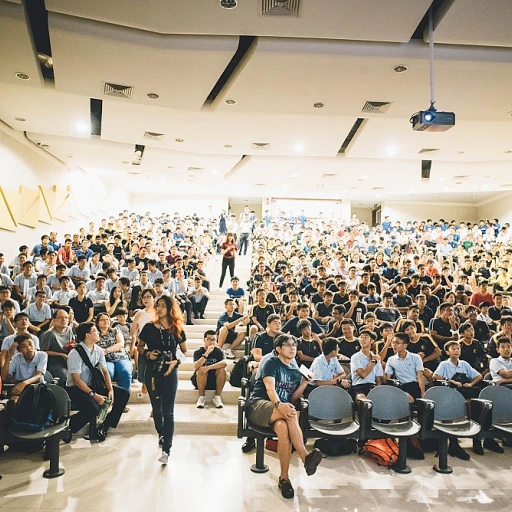
Understanding the Importance of HR Emails
The Significance of Effective HR Emails
In the realm of human resources, communication is key. Among the various channels available, emails stand out as a vital tool for reaching employees, candidates, and other stakeholders. Whether it's a job offer, an update on the company's stock options program, or a simple internal email about a change in management, the ability to convey clear and concise messages is crucial.
HR emails serve multiple purposes, from informing employees about sick leave policies to sending out employee referral programs. They are the backbone of a company's communication strategy, ensuring that everyone is on the same page. However, crafting these emails is not just about hitting the send button. It involves a careful balance of clarity, tone, and personalization.
When done right, HR emails can enhance employee engagement and foster a positive work environment. They help in building trust and transparency within the team, making employees feel valued and informed. On the flip side, poorly crafted emails can lead to confusion, misinterpretation, and even dissatisfaction among employees.
Given the importance of these communications, it's essential for HR professionals to continuously refine their email strategies. This is where AI-powered solutions come into play, offering innovative ways to improve the effectiveness of HR emails. By leveraging AI, companies can ensure that their communication is not only efficient but also resonates well with their audience.
For those looking to enhance their HR email strategies, understanding the challenges involved is the first step. From there, exploring AI-driven solutions can provide the necessary tools to craft emails that truly connect with employees and candidates alike. For more insights on enhancing efficiency in HR processes, consider exploring enhancing payroll management with AI.
Challenges in Crafting HR Emails
Addressing Common Obstacles in HR Email Writing
Crafting HR emails can be a challenging task for those involved in human resources management. The responsibility of effectively communicating with a diverse team of employees is a critical part of maintaining a positive work environment. However, this task is often met with several hurdles that need to be addressed to ensure effective communication. One of the main challenges in writing HR emails is achieving the right tone and clarity. Human resources professionals need to balance professionalism with approachability, ensuring that all emails are easy to comprehend while maintaining a respectful tone. Misinterpretation of email content can lead to confusion or conflict, which can adversely affect employee morale. Another common obstacle is personalization. With many employees having varying job titles, needs, and roles within the company, ensuring that each email is relevant to the recipient is essential. This is not just limited to sending out job offers or emails about stock options, but extends to topics such as sick leave, employee referral programs, and even internal email updates. Time constraints also present a significant issue for HR professionals. Drafting and sending individual emails to a large workforce can be time-consuming. Creating and maintaining a comprehensive email list, and regularly updating email templates to suit different employee groups and situations, is an ongoing task that consumes substantial time resources. Lastly, aligning HR emails with company policies and ensuring consistency across all communication is crucial. HR teams must ensure that email templates used for communication reflect the company's values and comply with the established guidelines, which can be a meticulous task. For those seeking further insight into addressing these challenges and optimizing their HR email strategies with technological solutions, hr block ai transforming tax preparation and assistance offers valuable perspectives.AI-Powered Solutions for HR Emails
How AI Transforms HR Email Solutions
In today's fast-paced work environment, human resources professionals are tasked with crafting effective emails that resonate with diverse audiences. Automated AI solutions can be quite instrumental in tackling this challenge, particularly when it comes to drafting clear, precise, and well-targeted emails. AI tools are designed to streamline the process of generating email templates and content, ensuring they meet the communication needs of human resources departments. By leveraging AI's capabilities, HR teams can save valuable time and focus more on strategic tasks such as employee engagement and change management. One of the notable benefits of using AI is its ability to draw from an extensive database of existing email templates. This feature allows HR professionals to choose the best option based on the specific job title, company objectives, or employee requests, such as sick leave notification or employee referral programs. AI ensures that each email aligns with the company's communication standards and maintains the intended tone across all employee interactions. Moreover, AI-powered solutions can generate dynamic subject lines tailored to the recipient's preferences or questions, which can enhance open rates and engagement. By utilizing tools like natural language processing, AI can analyze past communications to suggest improvements in tone and clarity for future messages. The implementation of AI-driven content creation means HR teams can focus less on painstakingly crafting emails and more on critical human resources initiatives, ensuring a more engaged and informed workforce. In the face of ongoing developments in AI technology, exploring enhancing workforce planning with AI in human resources can provide further insights into how these advancements can optimize HR communications and processes.Improving Personalization with AI
Leveraging AI for Personalized HR Email Communication
In today's diverse workplace landscape, personalizing communication is crucial in engaging employees and candidates meaningfully. AI enables human resources teams to tailor emails, surpassing generic templates to create impactful interactions. AI-driven technologies can analyze employee data, drawing insights from demographic and behavioral information. This helps HR professionals to curate content that resonates with the recipient. Whether informing about stock options, a job offer, or a sick leave policy, precision in personalization can enhance recipient engagement and communication effectiveness. Consider the benefits of AI in refining subject lines and email content. Personalized subject lines grab attention, directly increasing the open rates of emails. Furthermore, AI algorithms can suggest content variations based on past interactions, crafting messages that align with individual job titles or employee preferences. The role of language analysis also can’t be overlooked. AI tools evaluate text patterns, preferences, and styles, enabling HR to maintain a tone suited to the company culture while addressing individual needs. Tailoring an internal email to resonate with the creative team might involve a more informal tone, whereas communication with management could reflect more formal language. AI refines contact strategies by suggesting optimal times to email employees, recognizing when they are most likely to engage. This smart timing aligns with tasks such as sending informational emails about new company contact initiatives or announcing changes through change management programs. Through AI, HR can routinely update an email list, ensuring contact accuracy and relevance in distribution. Addressing candidates requires more than a stock email template. AI supports crafting personalized communications, enhancing candidate experience by addressing specific qualifications, roles, or values related to the employee referral process. Ultimately, transitioning from a generic email template to a more mindful, tailored approach shows a company's commitment to valuing each employee and candidate’s individuality. As AI continues to evolve, HR departments gain a toolset that enables personalized communication, paving the way for stronger organizational connections.Ensuring Clarity and Tone with AI
Leveraging AI for Clear and Consistent Communication
Ensuring clarity and maintaining the right tone in HR emails is crucial for effective communication within a company. AI tools can significantly help in this area by analyzing the language used in emails and suggesting improvements. This ensures that the message is not only clear but also aligns with the company’s communication standards.
AI can assist in crafting emails that are free from ambiguity, reducing the risk of misinterpretation among employees. By analyzing past communication patterns, AI can suggest the best phrases and structures to use, ensuring that the email content is straightforward and easy to understand. This is particularly useful when addressing sensitive topics such as sick leave, stock options, or changes in management.
Maintaining the Right Tone
The tone of an email can significantly impact how the message is received by employees. AI tools can analyze the sentiment of an email and suggest modifications to ensure that the tone is appropriate for the context. Whether it’s a job offer, an internal email about a new options program, or a letter email regarding a change in job title, maintaining a professional and empathetic tone is essential.
AI can also help in creating email templates that maintain a consistent tone across different communications. This is particularly beneficial for HR teams that need to send out multiple emails to different employees or candidates. By using AI-generated templates, HR professionals can save time while ensuring that their communication is both effective and consistent.
Streamlining the Review Process
Another advantage of using AI in crafting HR emails is the ability to streamline the review process. AI can quickly scan emails for potential issues, such as unclear language or inappropriate tone, before they are sent out. This not only saves time but also ensures that the emails meet the company’s communication standards.
By integrating AI into the email crafting process, HR teams can focus more on strategic tasks rather than spending excessive time on drafting and reviewing emails. This not only enhances efficiency but also improves the overall quality of communication within the company.












